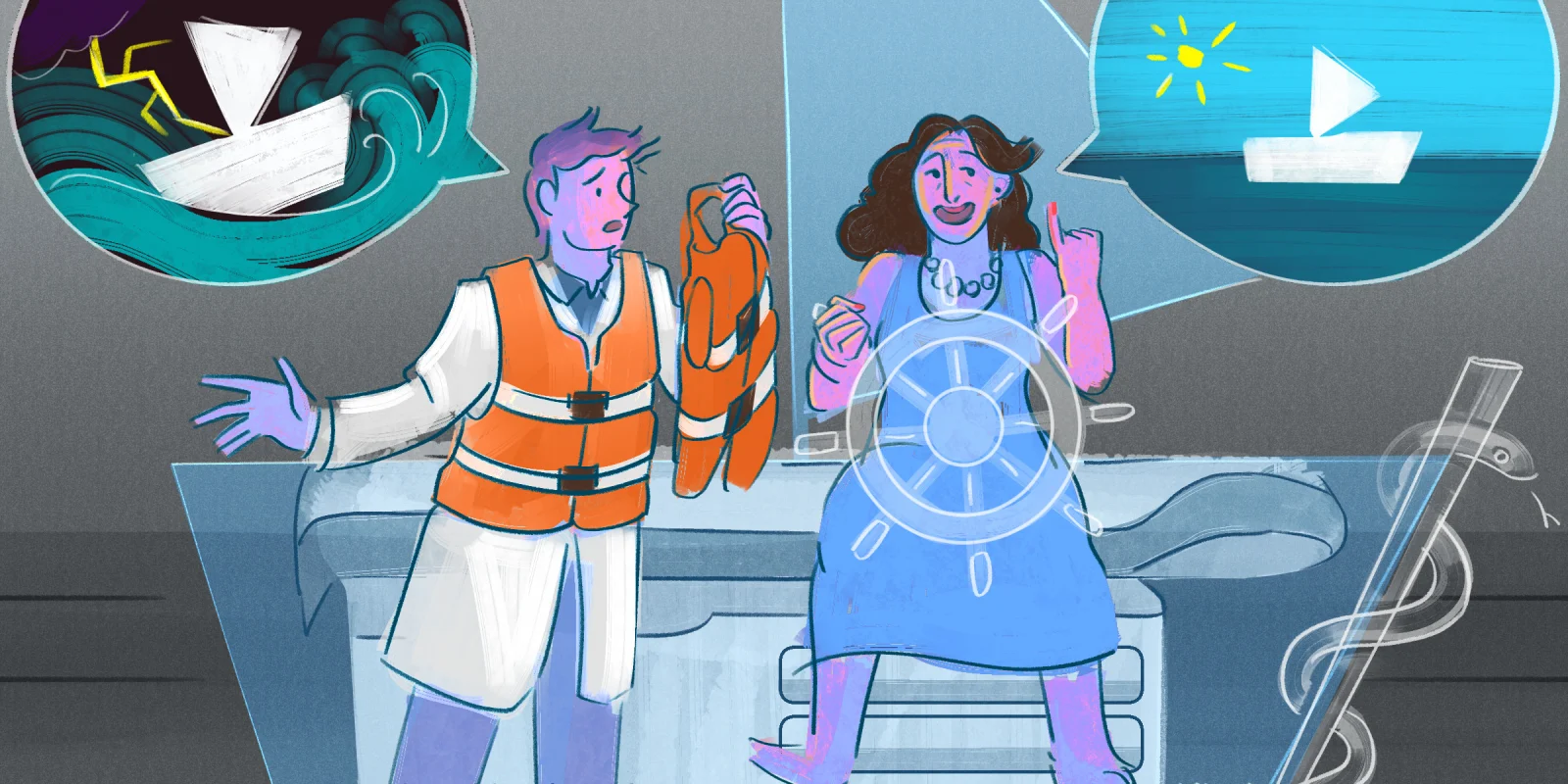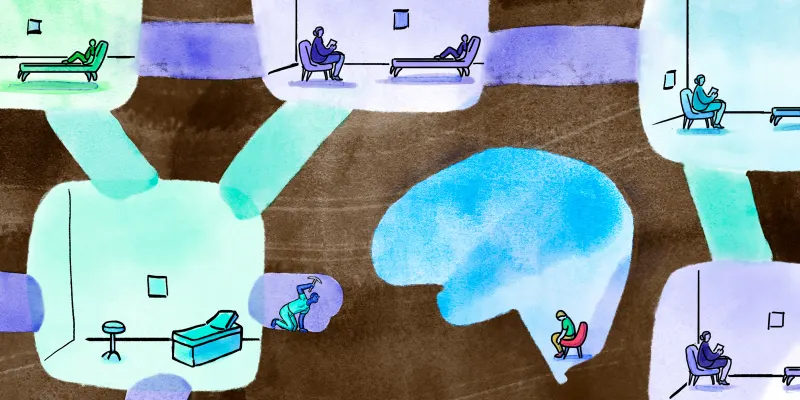I operated on Diana, and the results were disappointing. She followed up with me once after the surgery, but I didn’t see her again. So when a nurse told me she had been admitted to the hospital and wanted to speak with me, I was apprehensive.
I had first met Diana nine months earlier in my office after seeing her family practitioner. She complained of severe pruritus to the point it kept her awake at night. She requested a pill or cream to help with the itching. She didn’t get either — instead, she got an urgent referral to me.
When I met Diana, the first thing I noticed was that she was as yellow as Homer Simpson.
“When did the itching start?” I asked her.
“A couple of weeks ago.”
“Was that around the same time your skin turned yellow?”
“I think so.”
“Tell me,” I said as I prepared to ask the big question, “are you having any abdominal pain?”
“Pain? No, I don’t have any pain.”
"OK. That’s good," I said, meaning it was good she wasn’t hurting, but knowing it boded ill for her prognosis.
I sent her off for lab work and a CT scan of the abdomen, hoping I was wrong about her diagnosis but knowing I wasn’t. Unfortunately, I was right. The labs confirmed obstructive jaundice, and the CT showed a mass in the head of her pancreas obstructing her bile duct. I explained the findings and recommended a Whipple procedure.
This was back in the day when CT lacked the resolution we enjoy today, and PET scan was only a dream in community hospitals, so I made clear to her that we may find the disease had spread at the time of surgery.
Upon opening the abdomen, it was immediately evident that the malignancy had spread. I removed nodules and sent them for frozen section, knowing the result. Diana’s terminal diagnosis was confirmed, and I performed a bypass.
She recovered from the surgery without incident. Her jaundice cleared, and with it, her itching subsided. When I saw her one week after discharge, she was in good spirits and happily sleeping through the night. I again explained the findings at the time of surgery, what I had done, and recommended she follow-up with oncology. We made her an appointment with the oncologist and a follow-up with me in one month. I didn’t hear from her again, until nine months later.
I knocked gently on her hospital door and said, “Diana, it’s Dr. Black.”
“Oh, come in,” she said in her usual upbeat voice. The face that greeted me did not match the tone of voice. Diana was gaunt, and her once bright yellow skin was now sallow. Her breathing was labored. This was the look of a woman about to die.
We chatted amicably about nothing, and then I asked her what had happened. She told me she met with the oncologist, but she didn’t like his attitude. It wasn’t really his attitude she didn’t like; it was the dire prognosis he gave her. So she left. Later, she saw a TV commercial for a cancer clinic in another state. She called them up, got an appointment, and liked their “attitude” much better. She was treated in the TV doctor’s clinic and told that she was "cured." I can’t imagine any oncologist would say to a patient with inoperable pancreatic cancer that they were cured, but that is what Diana heard.
“So, what did you do after that?” I asked.
“Oh, we had a big project at work,” she told me. “Lots of overtime which was good because I wanted to remodel my bathroom and the extra pay made it possible.”
"You did what?” I wanted to say but didn’t. This woman had months to live, and she was spending what little time she had working overtime to pay for home improvements she wouldn’t be around to enjoy.
“What else?” I asked.
“I had a grandbaby!” She produced the half dozen photos all new grandmothers are required to show to everyone they meet.
I made all the usual approving sounds as she flipped through her collection.
“I want to go visit my daughter and the baby in Arizona,” she said.
“You haven’t seen them yet?”
“No, I’ve been too busy with work and the house.”
“How old is the baby?”
“Four months,” she beamed.
She had four months to visit her daughter and new grandchild, and she had squandered it. Now she was dying from pneumonia secondary to metastatic pancreatic cancer. There was no way she would make a trip to Arizona in this condition, but she could have done it a month, two, or four ago.
“Do you think I will be able to get out of here soon and see them?” she asked in a way that let told me she already knew the answer. I didn’t tell her anything different.
“Do you think they could come here and visit you?” I asked.
“I don’t know, my daughter is afraid to fly and worried about traveling with a newborn.”
Suddenly, Arizona felt much farther than 2,000 miles away. It felt like the far side of the world. It felt like the loss of hope.
“I’m sorry,” was all I could think to say.
Diana moved to inpatient hospice shortly after that, where she died without being reunited with her daughter or meeting her grandchild. Diana’s story is sad and tragic, but when I think back on it, what I feel is vexation. I was upset that Diana had squandered the little time she had between her treatment and her demise on overtime work to pay for home improvements. I didn’t understand how she could have chosen those options over traveling to Arizona to spend what little time she had with the people she cared about.
To be entirely honest, part of the anger was directed at myself. I don’t recall exactly what I had told Diana about her prognosis, but it is clear she did not understand the severity of her condition. Had I been too “gentle” in talking to her? Had I used euphemisms to soften the blow, or had I done it to protect myself? I’m still not sure, but I have not been able to shake the feeling that what happened was my fault in some small way.
The truth is, it doesn't matter what we say to our patients. What matters is what our patients understand. In this case, the patient did not understand her situation. I'm sure some of that was denial on her part, but some of it was a failure on my part to ask questions to assess her level of understanding. It isn’t necessarily wrong to use soft language and euphemisms to cushion the blow of a dire prognosis, but only if we are sure the patient is getting the message we are sending. And the only way to know what the patient understands is to ask them.
Asking does not mean asking yes/no questions like, "Do you understand?" Instead, I now ask questions like, "What do you understand?" and "What are you afraid of?" and "What else can I tell you about this?" and "What is most important to you?" Those questions can be hard to ask because the answers are not always easy to hear. But ask them we must. Patients need to have hope; I won't argue with that. But if patients leave our offices with unrealistic hope, we have done them a disservice.
I wish Diana had come to her second appointment with me. I wish I had asked her those questions. Then I could have told her to make all haste to get to Arizona while she could.
What do you regret not completing before a deadline? Share your "If only I had the time" wishes in the comments.
Charles Black is a general surgeon, father, landscape photographer, writer, outdoorsman, and fireside philosopher. Catch up with him at ChuckBPhilosophy.com where he writes about life, the universe and everything. You can also view his photos on ChuckBlackPhotography.com. Dr. Black was a 2019–2020 Doximity Op-Med Fellow, a 2020–2021 Doximity Op-Med Fellow, and is currently a 2021–2022 Doximity Op-Med Fellow.
All names and identifying information have been modified to protect patient privacy.
Illustration by April Brust







